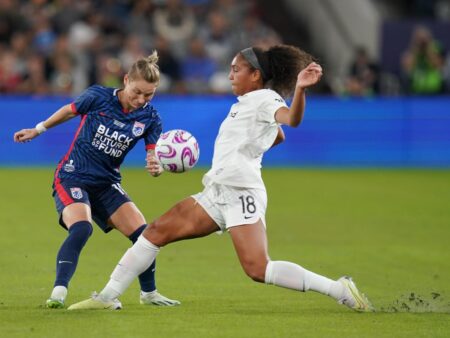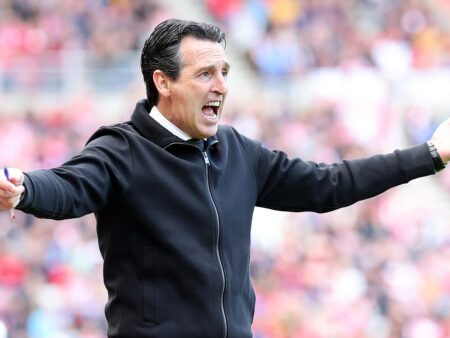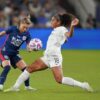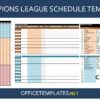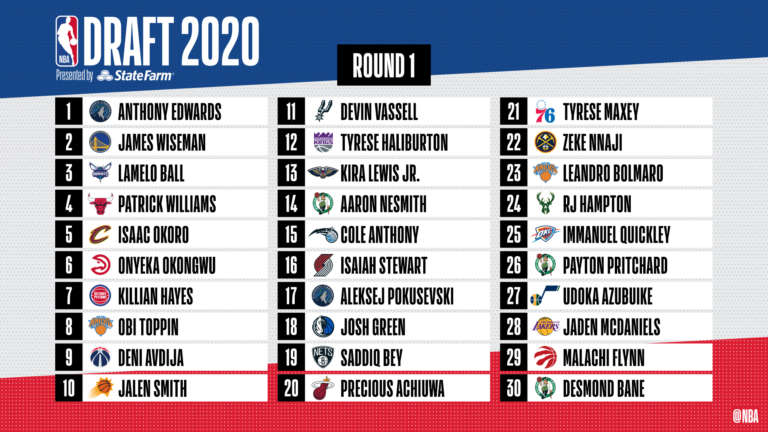
The Oklahoma City Thunder, fresh off their 2025 NBA championship, have established a new benchmark for how emerging playoff contenders can effectively accumulate future draft capital and cultivate young talent. The pivotal 2019 trade that brought MVP Shai Gilgeous-Alexander and a host of draft picks to Oklahoma City in exchange for Paul George has since become a strategic blueprint for maximizing asset returns. Six years later, this model is evident across the league, with five teams — the Thunder, Brooklyn Nets, Utah Jazz, Memphis Grizzlies, and Houston Rockets — collectively possessing a remarkable 55 first-round picks in the coming years.
This article examines and ranks these five teams based on their future first-round draft pick holdings as of September 18, 2025. We`ll delve into their strategic positioning, their most valuable assets, and the key questions that will shape their organizational decisions moving forward.
Jump to:
Thunder | Nets | Jazz | Rockets | Grizzlies
Also featuring insights on the most valuable individual picks and other notable teams in the draft capital landscape.
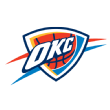 Oklahoma City Thunder
Oklahoma City Thunder
Incoming future first-round picks: 13
Future second-round picks: 16
Most valuable pick: 2026 top-4 protected first from Philadelphia 76ers and 2027 swap rights with LA Clippers
There is arguably no team better positioned for sustained long-term success than Oklahoma City. Despite committing over $800 million this summer to Shai Gilgeous-Alexander, Jalen Williams, and Chet Holmgren—a move that projects them as a second apron team next summer—the Thunder maintain an unparalleled treasure trove of future draft assets to counterbalance their rising payroll. While apron restrictions are designed to limit roster improvements via free agency and trades, Oklahoma City`s 13 first-round and 16 second-round picks over the next seven years offer immense flexibility. They are the only team poised to have at least three first-round picks in the 2026 draft, with a potential for four. Even if they continue to excel with one of the league`s best records, the Thunder could still find themselves drafting in the lottery for the next two seasons, thanks to a top-4 protected first from Philadelphia in 2026, and swap rights with the Clippers in 2027 and the Mavericks in 2028.
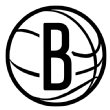 Brooklyn Nets
Brooklyn Nets
Incoming future first-round picks: 13
Future second-round picks: 19
Most valuable pick: Their own first in 2026 and unprotected 2032 first from Denver Nuggets
The 2026 draft holds immense significance for Brooklyn. The projected star power at the top of that class could single-handedly reshape the franchise`s trajectory. However, the Nets also face a 2027 pick swap obligation to the Houston Rockets, creating a critical inflection point for their ongoing rebuild. Under General Manager Sean Marks, the front office is prioritizing player development and roster reshaping, clearly aiming for top lottery odds next year. This strategy was evident in their five first-round selections in this year`s draft, where they emphasized versatility and playmaking, hoping to integrate as many rookies as possible into meaningful contributors. The anticipated losing season will provide an opportunity to secure a high pick in the 2026 draft, a class that talent evaluators have consistently expressed excitement about. Prospects like Kansas guard Darryn Peterson and BYU wing A.J. Dybantsa are seen as dynamic creators from day one. Because the Nets do not control their 2027 first-rounder, the subsequent offseason — which will again feature significant cap space and flexibility — presents a clear opportunity to accelerate the team back into playoff contention. A combination of potential free-agent stars and a rich cache of future draft capital gives Brooklyn a viable path to competitiveness if their plans materialize.
 Utah Jazz
Utah Jazz
Incoming future first-round picks: 11
Future second-round picks: 7
Future outgoing first-round picks: Top-8 protected to Oklahoma City (2026, else a 2028 second-round pick)
Most valuable first: Their own first in 2026 (if 1-8) and 2031 unprotected Phoenix Suns` first
The Jazz have largely been in neutral for the past three seasons, with a rebuilding process initiated in 2022 yet to yield substantial results. The offseason hiring of Austin Ainge to oversee the front office signaled a potential shift, as Ainge swiftly declared that Utah would not be tanking in 2025-26. However, with their 2026 first-round pick being top-8 protected to Oklahoma City, and a lack of significant veteran additions, the team`s direction, at least for one more season, remains ambiguous. Utah made a considerable gamble on Ace Bailey in the draft and bolstered their offense with Walter Clayton Jr. later in the first round. This season is crucial for internal development, as the Jazz evaluate which young prospects are long-term keepers. The distribution of crowded backcourt minutes among Clayton, Keyonte George, and Isaiah Collier will be particularly interesting. While the roster includes veterans, headlined by former All-Star Lauri Markkanen, the priority should be on developing talents like Bailey, Kyle Filipowski (who earned Summer League MVP), and Taylor Hendricks, all of whom need opportunities to grow. There`s no straightforward path for Utah back to playoff contention, but the potential of the 2026 draft class could be transformative, and exercising patience despite the protracted rebuild might ultimately pay off.
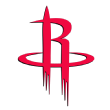 Houston Rockets
Houston Rockets
Incoming future first-round picks: 9
Future second-round picks: 4
Future outgoing first-round picks: Top-4 protected first to Oklahoma City (2026)
Most valuable first: 2027 unprotected Phoenix first and two of the more favorable firsts of own, Dallas, and Phoenix (2029)
The Rockets continue to make significant investments in both their immediate success and long-term future. They enter this season as one of the favorites in a competitive Western Conference, bolstered by the offseason acquisition of Kevin Durant, yet still hold valuable, high-leverage draft capital. Integrating Durant will be a major narrative this season, as the Rockets possess ample talent to contend in the West, along with a cadre of young, developing players contributing within this competitive environment. The unprotected 2027 pick Houston owns from Phoenix is a standout asset, representing a potential lottery ticket given the Suns` ongoing roster reset, which is expected to be challenging in the short term. This pick also serves as a potent trade chip if the Rockets opt to further consolidate their roster to contend while Durant, now 37, remains an elite player. However, the current sentiment among NBA teams regarding the 2027 draft class is largely underwhelming, with some executives viewing it as one of the weakest draft-eligible pools in recent memory. While the “bad draft” label is often oversimplified, this perception will influence how decision-makers, including the Rockets, approach their 2027 draft picks and their valuation in trade discussions throughout the season.
 Memphis Grizzlies
Memphis Grizzlies
Incoming future first-round picks: 9
Future second-round picks: 6
Most valuable first: 2026 unprotected Phoenix first
The Grizzlies made a calculated offseason decision to pivot towards long-term growth, trading Desmond Bane to the Orlando Magic for a valuable return of draft assets that helped stabilize the roster. They immediately utilized some of these assets to move up to No. 11 in this year`s draft, selecting Cedric Coward, a highly-touted sleeper prospect who missed most of his last college season due to injury. Memphis, anchored by Ja Morant and Jaren Jackson Jr., is not expected to bottom out and will likely remain in play-in conversations within the Western Conference. The decision to offload Bane could also foreshadow further moves, depending on the team`s performance early in the season. A significant advantage for the Grizzlies is the potential to acquire a lottery pick in 2026 regardless of their own season`s outcome, as they hold the rights to the Suns` 2026 first-round pick if the swap rights with the Washington Wizards are eliminated. This means Memphis could have multiple chances to select a top prospect without necessarily undertaking a drastic sell-off. Under Zach Kleiman, the Grizzlies have a strong history of building through the draft, and their patient approach this season is well-positioned to yield long-term benefits.
What First-Round Pick Could Be the Most Valuable Next June?
One of the most surprising trades on draft night was the New Orleans Pelicans` decision to send a high-value draft pick — specifically, the more favorable of its own and the Milwaukee Bucks` 2026 first — to the Atlanta Hawks for the 13th overall pick, Derik Queen. This asset stands out as the most tantalizing 2026 draft pick untethered from its original franchise, granting the Hawks a rare opportunity to potentially control two lottery-bound selections. The Pelicans` pick, in particular, appears to be a strong candidate for a high lottery spot, considering the organizational challenges and “snakebitten” nature they’ve experienced recently. Meanwhile, the Bucks will begin the season with a thin roster around Giannis Antetokounmpo, especially in the backcourt, and will heavily rely on him and new addition Myles Turner. While a playoff berth is attainable, Antetokounmpo will be tasked with an even greater creation burden than last season, with no guarantee of Milwaukee`s postseason return. From Atlanta`s perspective, the ideal scenario would involve dual lottery odds next May, a prospect that sparked considerable shock across the NBA given the potential high-impact players in the 2026 lottery class.
Hornets, Wizards, and Trail Blazers Among Next Tier of Teams
The Charlotte Hornets and Washington Wizards continue their long-term rebuilds, playing a patient game with their rosters. These two teams combined boast 15 players on first-round rookie contracts, an extraordinary 47 total draft picks over the next seven years, and over $100 million in expiring contracts. Charlotte possesses its own first-round pick for the next seven years, along with four additional firsts acquired through past trades. Their most valuable assets include a 2027 top-14 protected first from the Miami Heat (which becomes unprotected in 2028) and a 2027 top-2 protected first from the Mavericks.
The Wizards, on the other hand, find themselves in a unique position: their 2026 first-round pick conveys to the New York Knicks if it falls outside the top-8, and they also have the right to swap firsts with the Suns if the pick to the Knicks is not conveyed. Should they retain their own first, they will send New York a 2026 and 2027 second-round pick instead. Conversely, the Portland Trail Blazers adopted an aggressive strategy this summer, first trading for veteran Jrue Holiday and then signing injured guard Damian Lillard. Remarkably, these two significant transactions were completed without sending out any draft picks. Ironically, stemming from the trades that sent Lillard to Milwaukee and Holiday to Boston in the 2023 offseason, the Trail Blazers now own both the most and least favorable 2029 first-round picks (among their own, Boston`s, and Milwaukee`s). They also hold swap rights with the Bucks in 2028 and 2030. Their own 2026 first-round pick will only convey to the Chicago Bulls if it falls outside the top 14.
After Trading for Superstars, Do Warriors, Lakers, and Spurs Have Enough for Another Big Move?
The Golden State Warriors traded their 2025 first-round pick for Jimmy Butler, but still retain control over up to four future first-round picks (2026, 2028, 2030, 2032) and possess swap rights in every season. While they undoubtedly have the draft assets to acquire another impact player, a potential obstacle could be the lack of sizable contracts available to facilitate a trade, as the trio of Butler, Stephen Curry, and Draymond Green collectively account for 78% of Golden State`s salary this season. The Lakers, however, face the opposite challenge. Despite LeBron James and Luka Doncic earning close to $100 million this season, Los Angeles still commands over $60 million in expiring contracts that could be used in a trade. Their primary limitation is a scarcity of available first-round picks, having owed a 2027 top-4 protected first to Utah and an unprotected 2029 first to Dallas. Their only tradable first is in either 2031 or 2032, though they do hold swap rights in five seasons (2026, 2028, 2030, 2031, and 2032). Both the Warriors and Lakers also have only one second-round pick available to trade.
Meanwhile, do not overlook the San Antonio Spurs` potential to acquire another All-Star-level player to complement Victor Wembanyama, even after trading four firsts for De`Aaron Fox. The Spurs hold swap rights with Atlanta this year and the Hawks` unprotected first in 2027. They also possess swap rights with Boston (top-1 protected in 2028), the more favorable of Dallas`s and the Minnesota Timberwolves` picks (top-1 protected in 2030), and Sacramento`s (2031). San Antonio can also trade two of their own first-round picks in 2029 and either 2031 or 2032. Furthermore, San Antonio boasts an impressive 15 second-round picks, the third-highest total of any team in the league, providing immense flexibility for future maneuvers.
